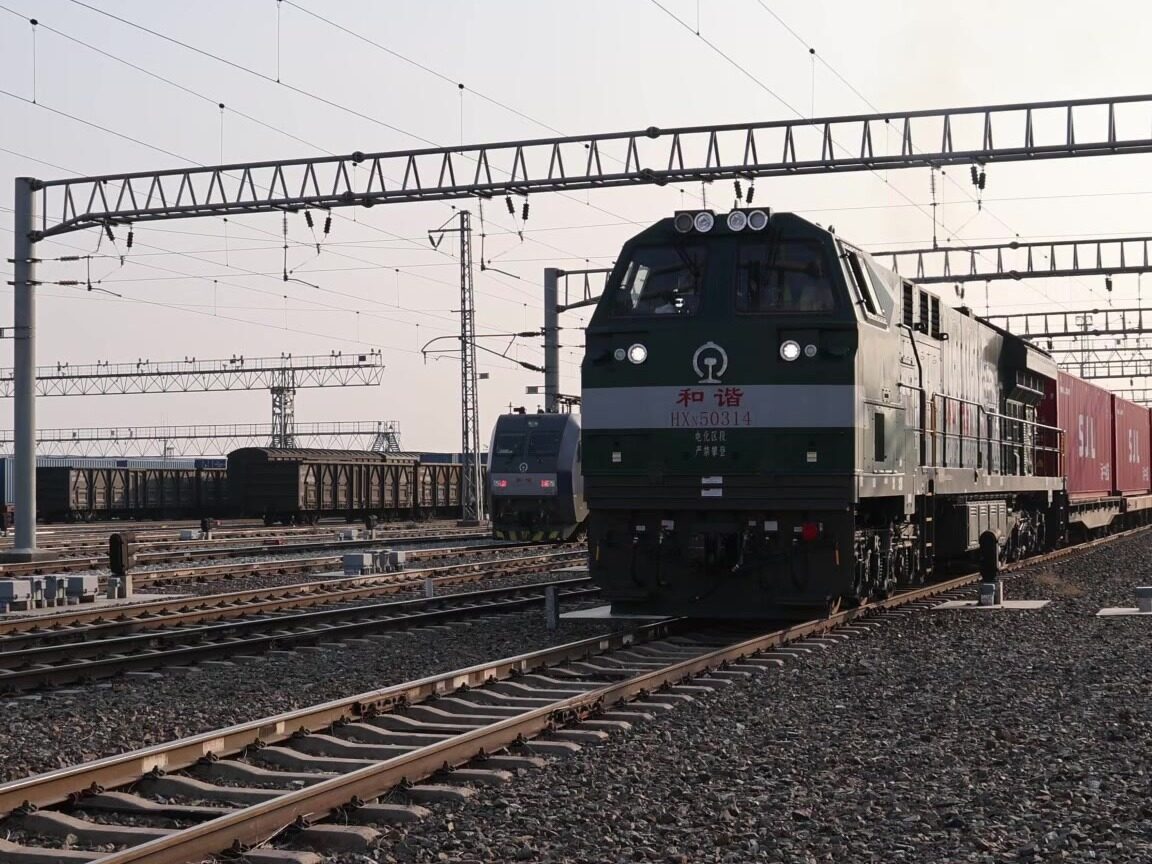- In the first quarter of this year, the freight volume of the freight trains increased by 68.2% year-on-year
- It is expected that the annual transportation volume will exceed 1 million TEUs in 2025

As of April 9th, since the rail-sea intermodal freight trains of the New Western Land-Sea Corridor were launched on April 28, 2017, the cumulative transportation volume of containerized goods has exceeded 4 million twenty-foot equivalent units (TEUs), reaching 4.041 million TEUs. This achievement marks that the corridor is playing an increasingly important role in promoting trade exchanges between the western region of China and the rest of the world.
The New Western Land-Sea Corridor integrates various transportation modes such as railway, road, and waterway, transporting goods from the western region to all parts of the world via the Beibu Gulf Port. Taking Chongqing as an example, when goods are shipped out to sea through the New Western Land-Sea Corridor, compared with the traditional route of using the Yangtze River waterway and then transferring to ASEAN and other places, the transportation distance is significantly shortened, and the logistics time for shipping out to sea can be reduced by about 25 days. This advantage has greatly improved the efficiency of cargo transportation and reduced logistics costs.

The rail-sea intermodal freight trains of the New Western Land-Sea Corridor, with their characteristics of being economical, efficient, and convenient, have been widely recognized by domestic and foreign customers, and the freight volume has continued to grow rapidly. Data shows that the annual freight volume of the trains has soared from 3,382 TEUs in 2017 to 966,000 TEUs in 2024, an increase of as high as 285 times. In the first quarter of this year, the freight volume of the trains continued to rise sharply, increasing by 68.2% year-on-year.
Zhong Chaowen, Deputy Director of the Transportation Marketing Department of the Coastal Railway Company of the Nanning Bureau Group of China State Railway Group, introduced that it took more than four years for the freight volume of containerized goods of the trains of the New Western Land-Sea Corridor to break through the first million TEUs, about 480 days for the second million TEUs, about 410 days for the third million TEUs, and only about 340 days for the fourth million TEUs, with the growth rate accelerating continuously. It is expected that the annual transportation volume will exceed 1 million TEUs in 2025.
In response to the growing transportation demand, in recent years, the main trunk lines of the railway sea exit channels in Guangxi, such as the Liqin, Nanfang, and Qingang railways, have all been electrified. This measure has shortened the freight train transportation time by nearly 20% and increased the transportation capacity by 6.5%. At the same time, modern logistics bases such as the Nanning International Railway Port, Qinzhou Railway Container Central Station, and Liuzhou Railway Port have been successively built and put into use, further enhancing the freight capacity.

At present, a total of 23 scheduled operation lines have been opened for the trains of the New Western Land-Sea Corridor. A large rail-sea intermodal logistics channel has been established between southwest regions such as Chengdu, Chongqing, Guiyang, and Kunming and Beibu Gulf regions such as Fangchenggang, Zhanjiang, and Qinzhou, and it has achieved seamless connection with the China-Europe freight trains. The train network has expanded from the initial "single line" from the Beibu Gulf Port to Chongqing to a "network" from the Beibu Gulf Port to the main provinces in the western region, forming a golden logistics channel running through the southwest region of China. This has strongly promoted the economic and social development of the western region and provided a solid guarantee for high-level opening up to the outside world. (This article is from the official website of Seetao.com, www.seetao.com. No reprinting is allowed without permission. Otherwise, legal liability will be pursued. If reprinting, please indicate Seetao.com + the original text link.) Editor of the Strategic Column of Seetao.com / Yin Shiqian
Comment
 Praise
Praise
 Collect
Collect
 Comment
Comment
 Search
Search














Write something~